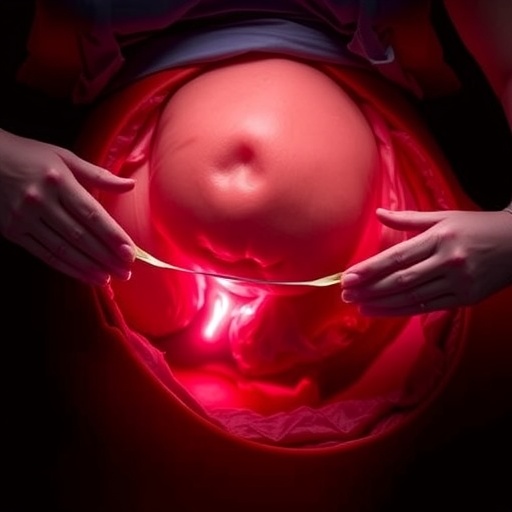A groundbreaking study from Flinders University has revealed a significant, yet underappreciated, risk factor for cardiovascular disease: exposure to bright light during nighttime hours. This extensive research, published in the prestigious journal JAMA Network Open, provides compelling evidence linking artificial light at night (ALAN) with a heightened incidence of serious heart conditions including heart attacks, strokes, and heart failure. By meticulously analyzing nearly 89,000 UK participants’ light exposure over an extended period, the study offers fresh insights into how our modern lighting environments may be subtly but profoundly influencing heart health.
This landmark investigation distinguishes itself by leveraging wearable technology—wrist-worn sensors that monitored over 13 million hours of light exposure—enabling researchers to capture detailed, real-world data on personal light environments. Traditional studies have often relied on satellite imagery or surveys assessing outdoor light pollution, limiting their scope predominantly to environmental lighting. In contrast, this research captures the nuanced impact of indoor lighting and individual behavior patterns, factors intricately tied to our circadian biology. This approach allowed for precise quantification of a person’s exposure to light during normally dark periods.
The data, collected over a follow-up period reaching up to 9.5 years, showed a disturbing correlation. Participants subjected to the brightest light at night exhibited a 56% increased likelihood of developing heart failure and a 47% higher risk of heart attacks, independent of established cardiovascular risk factors such as diet, physical activity, genetic predispositions, and sleep quality. These findings underscore an independent, robust association between nighttime light exposure and cardiovascular morbidity, suggesting that ALAN may represent a modifiable health hazard warranting urgent attention.
The biological underpinnings of these observations revolve around the disruption of the circadian system, our internal 24-hour clock that orchestrates myriad physiological processes including hormone secretion, metabolic regulation, and cardiovascular function. Bright light exposure at night interferes with melatonin production—a hormone critical for regulating sleep-wake cycles and cardiovascular homeostasis—thereby destabilizing cardiac rhythms and contributing to pathophysiological changes. Repeated circadian disruption is recognized for fostering inflammation, endothelial dysfunction, and metabolic derangements, all of which are antecedents for heart disease.
Dr. Daniel Windred, the lead author and Research Associate at FHMRI Sleep Health, emphasized the broad relevance of these results, particularly as light exposure at night is a pervasive feature of modern lifestyles. “Our internal clocks evolved over millennia to function in alignment with natural light-dark cycles,” he stated. “With the digital age facilitating prolonged exposure to screens and artificial lighting well past sunset, we are now confronting a public health challenge inherent to technological advancement.” This assertion highlights the need to reconsider how artificial lighting—once a symbol of progress—may paradoxically undermine cardiovascular health.
Importantly, the study revealed demographic nuances: women and younger populations exhibited heightened sensitivity to the cardiovascular effects of night-time light exposure. Susan Cain, senior co-author and professor, pointed out that women exposed to high levels of nighttime illumination had heart failure risks comparable to men, a remarkable deviation since women generally display some protection against cardiovascular disease. This sex-specific effect may be linked to differences in circadian biology or hormonal milieu, warranting further exploration to tailor preventive strategies effectively.
The findings have significant implications extending beyond shift workers or residents of urban centers traditionally considered at risk for light pollution. Everyday behaviors—like scrolling on smartphones, watching television in bed, or keeping bedroom lights on—can expose individuals to harmful light levels, subtly eroding cardiovascular health over time. Associate Professor Andrew Phillips underscored that even modest indoor lighting disrupts circadian regulation, dispelling the misconception that only intense outdoor lighting poses risks. These insights call for heightened public awareness and behavioral modifications to safeguard heart health.
From a clinical perspective, these results advocate for the integration of circadian health considerations into cardiovascular risk assessment. Current guidelines predominantly emphasize modifiable factors such as hypertension, cholesterol, smoking, and physical inactivity. Yet, this research suggests that nocturnal light exposure merits equivalent attention. Practitioners may consider advising patients on optimizing sleep environments using blackout curtains, reducing screen usage before bedtime, and employing dim, warm lighting in evening routines to mitigate circadian disruption.
Moreover, the authors propose that policymakers reexamine urban and indoor lighting standards to incorporate circadian science, envisioning a future where architectural and public health designs harmonize with biological rhythms. Hospitals, care facilities, and homes could benefit from lighting interventions that minimize circadian interference without compromising safety. These innovations could potentiate population-wide reductions in cardiovascular disease burden, aligning technological progress with physiological well-being.
This research opens a burgeoning avenue for future inquiry. Investigations might delve into mechanistic pathways linking light exposure to cardiac pathology, differential susceptibilities across age groups, or the efficacy of targeted interventions to restore circadian alignment. It also presents a compelling case for interdisciplinary collaboration between cardiology, chronobiology, urban planning, and behavioral science to formulate comprehensive strategies addressing this emerging health threat.
Amid escalating global cardiovascular mortality rates, largely driven by lifestyle and environmental factors, recognizing artificial light at night as a potent, modifiable hazard could herald transformative changes in preventive cardiology. As Professor Cain aptly concluded, “Protecting our natural sleep rhythms could be one of the most powerful, yet underutilized, tools in combating heart disease.” This statement encapsulates the paradigm shift this study catalyzes, urging both individuals and societies to embrace circadian health as central to cardiovascular resilience.
In summary, this pioneering study from Flinders University offers robust evidence that exposure to bright light at night is a significant, independent risk factor for cardiovascular diseases. By utilizing cutting-edge wearable technology to measure real-time light exposure and following an extensive cohort longitudinally, the research provides unprecedented clarity on the profound effects of ALAN on heart health. These findings should galvanize public health initiatives, clinical practices, and urban design policies to prioritize circadian alignment as a cornerstone of cardiovascular disease prevention.
Subject of Research: People
Article Title: Light Exposure at Night and Cardiovascular Disease Incidence
News Publication Date: 24-Oct-2025
Web References:
https://doi.org/10.1001/jamanetworkopen.2025.39031
References:
Windred, D. P., Burns, A. C., Rutter, M. K., Lane, J. M., Saxena, R., Scheer, F. A. J. L., Cain, S. W., & Phillips, A. J. K. (2025). Light Exposure at Night and Cardiovascular Disease Incidence. JAMA Network Open. DOI: 10.1001/jamanetworkopen.2025.39031
Image Credits: Flinders University
Keywords: Artificial light at night, cardiovascular disease, heart failure, circadian disruption, melatonin suppression, wearable light sensors, heart attack risk, circadian health, indoor lighting, sleep environment, digital device exposure, public health
Tags: including heart attacks and strokes. The findings have crucial implications for public health recommendationsnight experienced a significantly greater risk of developing cardiovascular diseases





